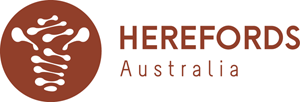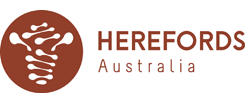New Herefords Australia Selection Indexes Better Represent Modern Production Systems
In October 2019, Herefords Australia will release four new selection indexes. These are the Southern Self-Replacing Index (SSR), the Northern Self-Replacing Index (NSR), the Southern Baldy Maternal Index (SBM) and the Northern Baldy Terminal Index (NBT). These four selection indexes will replace the previous Hereford selection indexes.
The selection indexes calculated by BREEDPLAN are generated using a software package called BreedObject. The BreedObject technology was developed by the Animal Genetics and Breeding Unit (AGBU), a joint venture of NSW Department of Primary Industries (DPI) and the University of New England (UNE), with financial assistance from Meat and Livestock Australia (MLA). While the development of selection indexes is quite a lengthy process, one critical aspect is the accurate description of the production system, including pricing (both costs and earnings) within the given production system. As both the overall production system and pricing values within the production system may change over time, all selection indexes should be regularly reviewed to ensure that they best represent the production system they are describing. Given the Herefords Australia Selection Indexes were last revised in 2014; a review of Herefords Australia Selection Indexes was carried out.
In addition, AGBU has recently made available a new version of the BreedObject software. This new version includes a number of developments, including:
- Improved modelling of young animal growth. This includes:
- Separate modelling for each sex. This gives the potential for each sex to have different market end points in a selection index.
- Revised modelling of growth during backgrounding and in the feedlot.
- Revised modelling of feed requirements for young animals. This includes the ability to use NFI EBVs in selection indexes.
- Improved modelling of cow weight and condition score throughout the year. This includes:
- More advanced modelling of cow weight, and subsequently feed requirements, at times of year when feed is in short supply and/or expensive.
- Inclusion of cow condition score and production penalties for cows outside of optimum condition (too lean or too fat).
- Revised methodology for valuing cows when culled. This allows for variation in sale weight and value between cows culled for various reasons (e.g. cast for age, reproductive failure, poor condition, etc.).
- Enhanced modelling of carcase market specifications and values.
- This includes the ability to handle non-linear price structures like carcase grids that penalise both too lean and too fat carcases, and/or those that penalise under and overweight carcases.
As a consequence of these enhancements, the selection indexes have moved away from the traditional finishing-system and market end-point focus (e.g. grass or grain finished). Instead, each of the new Australian Hereford Selection Indexes better reflect a whole production system in which Hereford bulls are used. Recent AGBU research has shown that finishing type (e.g. grass versus grain finished) has less effect on the overall breeding objective than other features of the production system (such as cost and/or length of time of supplementary feeding). For Herefords Australia, where producer feedback indicates that there are different feed costs between southern (winter-dominated rainfall; feed costs inherently lower) and northern (summer-dominated rainfall; feed costs inherently higher) regions, these enhancements have allowed the development of Herefords Australia Selection Indexes where regional differences in cow feed cost can be better accounted for. Improvements in the modelling of carcase market specifications and values also allows Hereford producers access to selection indexes which better reflect grid premiums for MSA graded cattle.
The four new Herefords Australia Selection Indexes have been developed through extensive consultation with Hereford producers (both seedstock and commercial), meat processors and scientists to ensure that they best reflect the current production systems in which Australian Hereford bulls are used. These new Herefords Australia Selection Indexes are a valuable tool which, when utilised by producers, will assist in improving profitability within straight-bred and crossbred Hereford herds.





